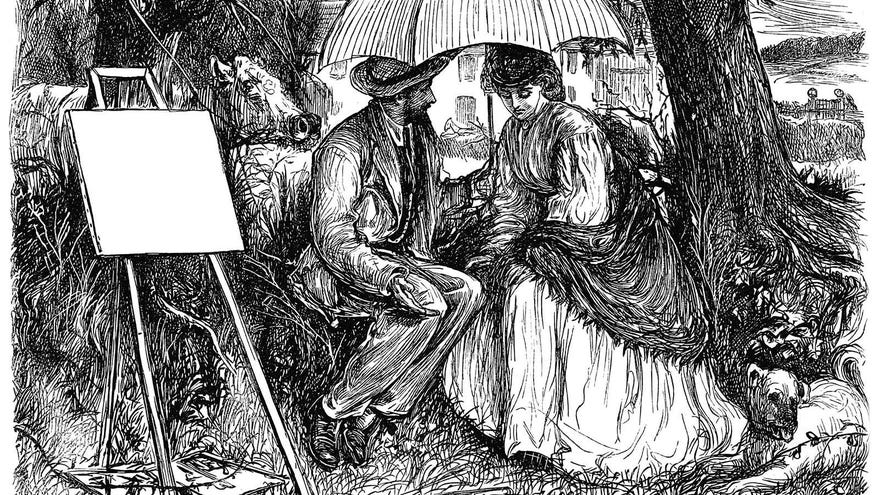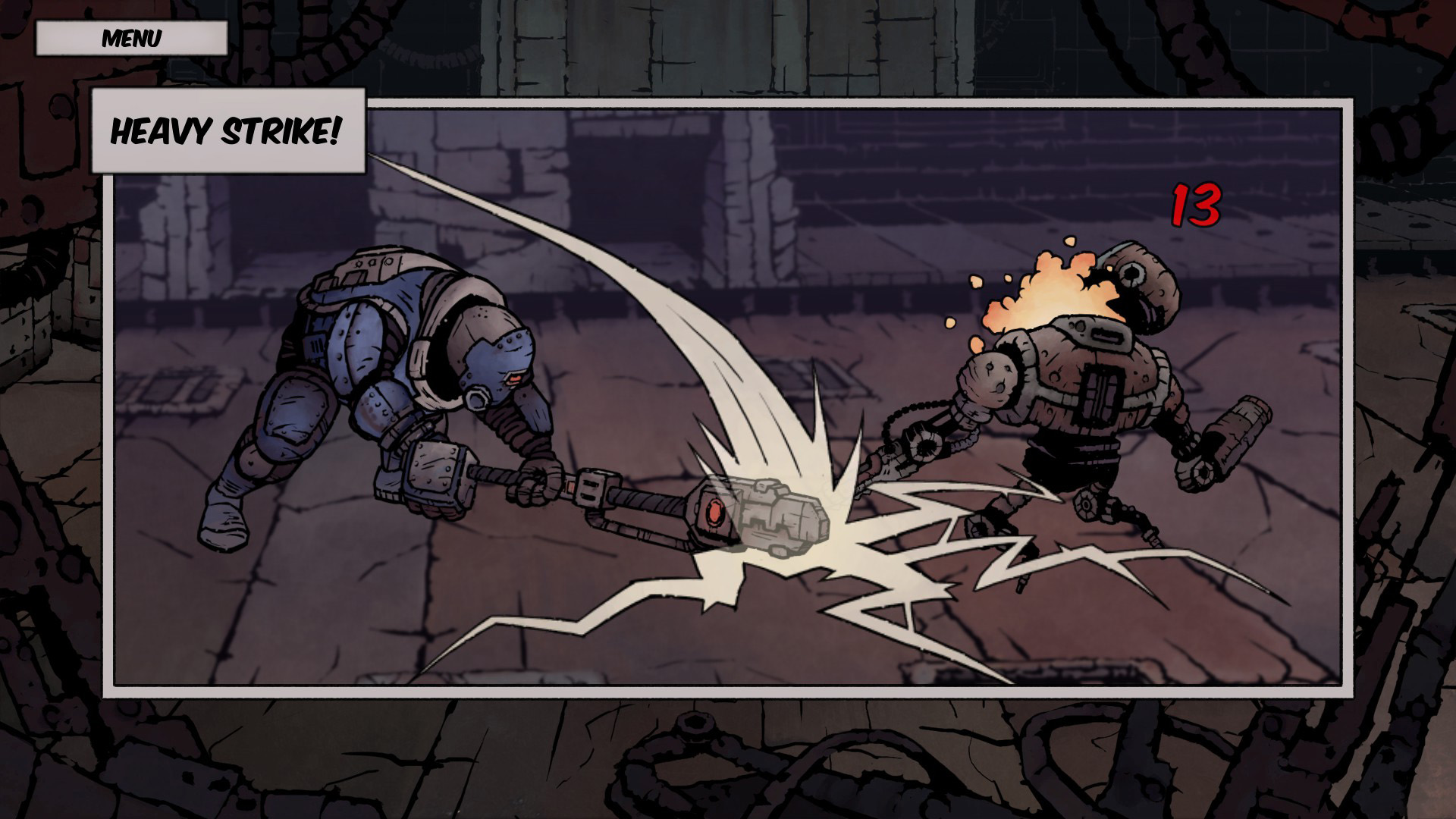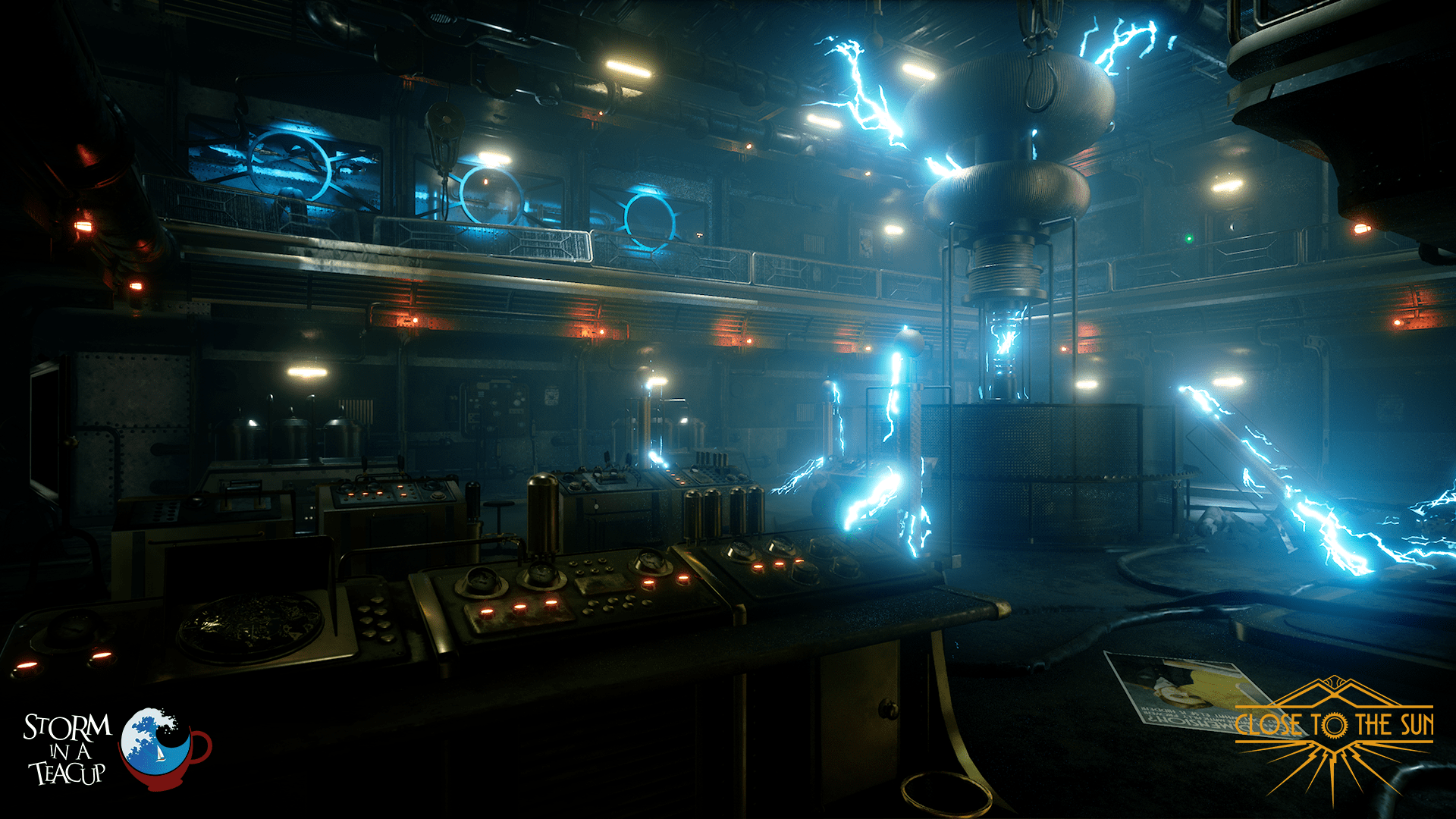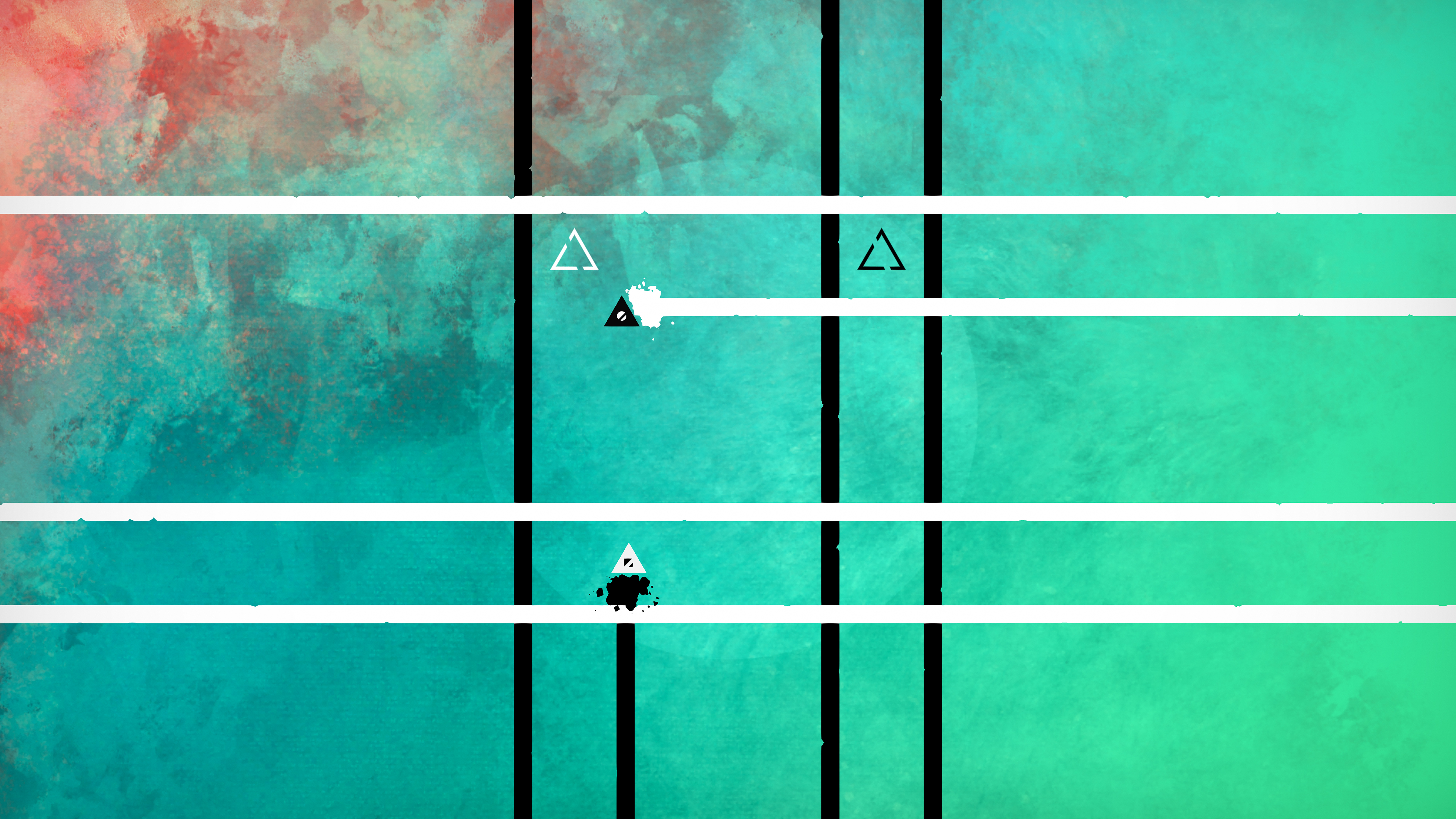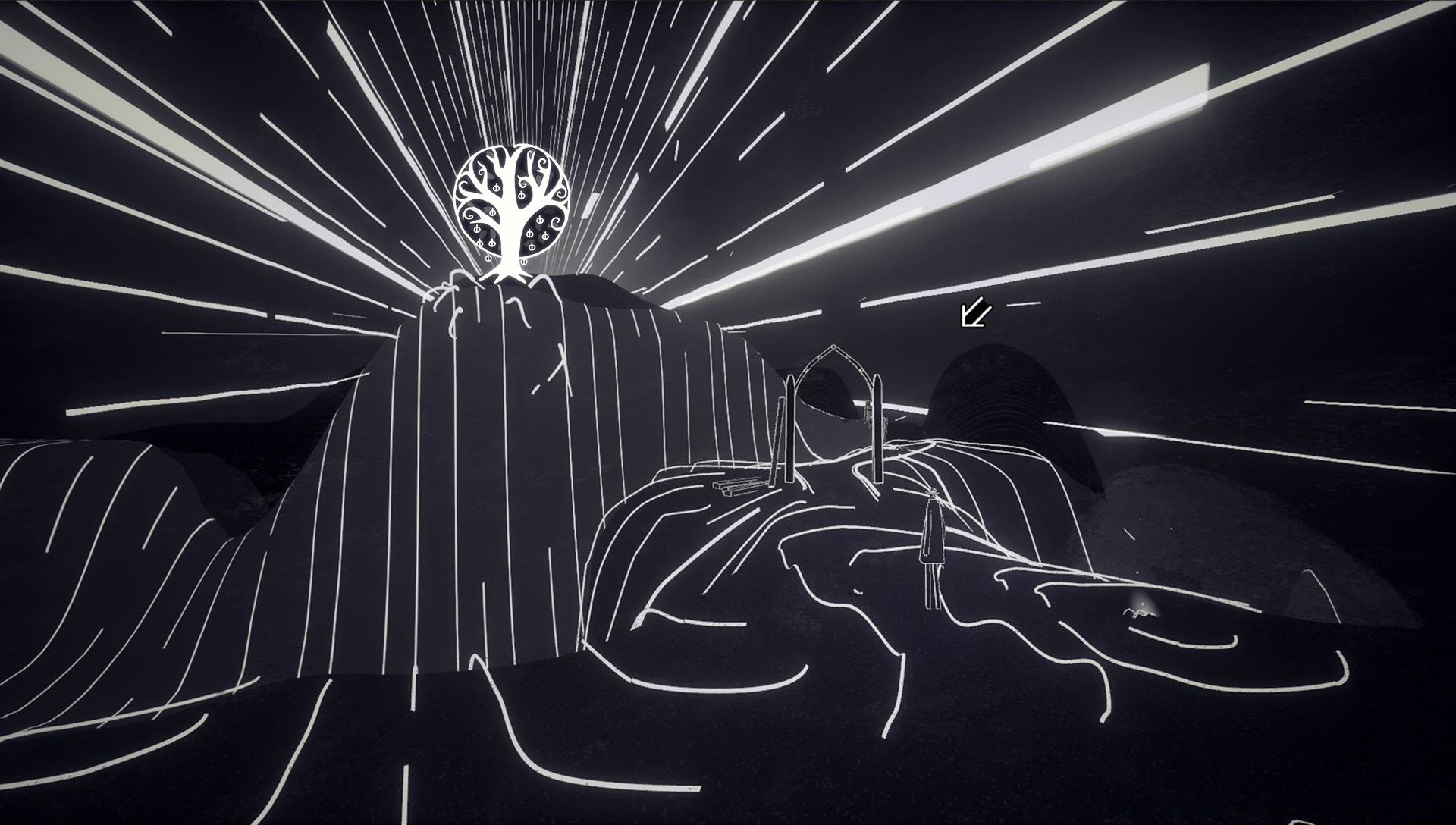Strange indie games to watch from Gamescom 2018
Keep 'em peeled
There were a lot of games at Gamescom. A lot of them were good and interesting, but I didn’t get enough time with them to write you thousands of words, or they’re not quite done enough yet. They’re a soufflé that needs more time to rise. But I still wanted to tell you about them, these strange little soufflés in many different flavours. An alternate universe horror game starring Nikola Tesla. A game where you manage orphans. The most ambitious MMO that may never get made. A noir story set against the backdrop of all of creation. Please enjoy this tasting menu.
Deep Sky Derelicts
1C just announced the full release date for Deep Sky Derelicts, just shy of a year since Fraser took at look at it for Premature Evaluation. It’s sort of a dungeon crawler roguelite, with tactical card combat folded in. Send a plucky team of scavengers into huge, maze-like derelict spaceships for fun and profit; smash robots and snake ladies; make friends with giant worms; upgrade your crack team’s gear and abilities. Each member of your squad (of three, at any one time) has different cards in their combat deck, which are drawn randomly in rounds of combat, and that you can add to by specialising the characters in different ways.
I very much enjoyed the build I played at Gamescom. Comparing my experience to Fraser’s, I ran into lots of combat as well as weird non-com encounters, including a sentient floor that was in pain, and found the card combat licked along at a very enjoyable pace. And, of course, I fell in love with the art, your punches splashing onto the screen as frames of a grim comic book. The only thing missing were sound effect word bubbles. BLAMMO! ZZZZAP! SKRRT!
The Sojourn
The Sojourn is a pretty first person puzzler in a 3D space, often involving swapping statues and sculptures around on a stone walkway. And the statues and sculptures do different things, so you have to get them in the right place. And you yourself are one of the pieces, which adds a whole other layer of “Oh, wait, no, I did that wrong…” to proceedings. I blasted through a few puzzles; in the full game there will be four chapters, each with a different feel, adding up to dozens of puzzles to get through.
In The Sojourn you can look at the world normally, or through a kind of field of darkness that makes sinister jellyfish monsters appear in the sky, but also opens up different obstacles or walkways that will disappear to you once your dark-o-vision wears off. The interaction between the real world and the dark side of it are the key points of puzzling. There are pads that power up the dark sight ability in you for a set amount of time, statues that you can swap places with while you’re powered up, gates that only open if said statues are in the right place, harps that play magic notes to sustain walkways - that kind of thing. As you go you have to build more of these together in different steps. As a fan of The Witness, I think I'll probably like this one a lot.
Carried Away
Carried Away is a physics game meets a bridge builder meets winter sports meets mangling skiers in the ski lift deliberately because they leave little blood trails in the snow. God knows what kind of winter resort this is, but apparently you’ve got to finish building some of it. This involves constructing ramps, gondolas and chair lifts such that they get at least one member of the public to the start (or, in the case of the snowmobile, the finish) of the course intact, without bouncing into a tree or ragdolling down a mountain.
Carried Away was good fun to play - the proverbial easy to pick up, but hard to master. Rather than limiting materials you’re charged per plank, as it were, which allows for greater creativity (especially if you want to try a few rounds of murder by ski lift before you actually complete the objective). It’s currently in early access on Steam, but already has a buncha levels. Most impressive was the very big custom level editor. It even had a randomise trees option. And did I mention you can catapult unsuspecting downhill slalom enthusiasts very high into the air?
Close To The Sun
If you were holding my most beloved family member hostage (that being, for future reference, the small cuddly toy elephant that was presented to baby Alice on the day of her birth), I would boardroom-pitch Close To The Sun [official site] as “Horror version of BioShock where a journalist teams up with her sister to take down mad-science Nikola Tesla and time travel monsters.” And really, what more do you need to pique your interest?
Announced at last year’s show, I had a good chunk of time with a playable build of Close To The Sun at Gamescom and confirm that it’s both beautiful and creepy, with some fun puzzles thrown in. Plus cool attention to detail! The game takes place on a huge sort of city state boat that Tesla built for cool science types and, hilariously, it includes a museum to himself of his own best achievements - and in it the developers have put newspapers that are real, and were actually printed about Tesla! Or, well, digital versions of same. You know what I mean.
A lot of Close To The Sun feels familiar, because sinister art deco has been a popular look for games, and also BioShock extremely happened. But is not also, my friends, the taste of good chocolate familiar? The feel of silky pyjamas? The aroma of good coffee? And an alternate history where Tesla won the science race against Edison sounds like some damn fine coffee. No, wait, that’s that other pop-culture thing, isn’t it?
Seed
Right now Seed [official site] is, really, a seed of what it says it’ll be in a few years. I recommend this as one to watch because it’s probably the most ambitious project a dev has ever tried to sell me. In this case that dev was Mundi Vondi, Klang Games’ CEO, who was sort of rockstar dishevelled and said he the had the flu, which I suspect was the same kind of flu a lot of people had on the morning after the last night of Gamescom. He did agree that at Klang they’re “as ambitious as they come”. Right now in Seed you can make a little pair of settlers, and get them to build a settlement. They have an individual schedule for work and sleep and free time that you can alter. They have needs and moods and personality traits affecting same. You can get them to build little houses, little campfires, cook little food, and then pretty soon you have a little community, and more little settlers turn up. You can zoom right down and look at their little faces. It’s very sweet.
But in the future - oh the future! That far-off country! - I am told that building will be entirely modular, so players can build wall by wall and customise their houses. They can work together to form online societies. Some players will run bustling coffee shops; others will form the governments under which those coffee shops are built. There could be wars. Taxes. All of life’s rich tapestry, but simulated online. By god, Elon Musk was right all along! I will be interested to see what factions and societies might arise. Hypothetically, in 15 years time I could be reading about how the UN observed patterns of behaviour in Seed, and then adapted it into their famine crisis management or something.
Anyway, not very much of that exists yet, but is predicted to sort of exist by around 2020. And if it does I will be very, very impressed, because Brendy saw it last year and it doesn't seem like loads has changed yet.
Deru
I happened upon this game as I was about to leave the show to get the train home (which I subsequently missed, by the way). Deru is a two-player puzzle game where one of you is a little white dot and the other is a little black dot. You have to navigate shapes made by what looks like moving black and white sand, or water. Stuff anyway. The white dot can block the black stuff and is destroyed by the white stuff. You can predict the black dot’s abilities from this.
To get through the puzzles you have to time everything perfectly, and protect one another. There’s a need for proper communication, a lot of “Okay: three, two, one… go!” and I really liked that about it. It made me think of when I was younger and stayed up late playing the co-op bit of Portal 2 with a friend. And all of the puzzles look like a bit of weird art that you’d find on the wall of a swanky hotel - the kind of hotel that has toiletries in a signature scent and three pillows of varying size on the bed. They’re clean and simple, but in a way that you can just tell someone had to spend ages thinking about them.
The Waylanders
This is a weird one. So, it’s from the studio headed by Gato Salvaje, who did Bullshot and the AR-K games. The Waylanders [official site] is a medieval-ish RPG set in northern Spain, with Mike Laidlaw, previously of “BioWare’s Mike Laidlaw” fame, as a creative consultant. You have a team of characters with different classes, thus having different abilities, you can pause for tactical combat or play in real time, etc. and so on. The wrinkle for the combat comes with Formations. You can group a number of your squad into them in battle, like a Phalanx to charge with, or a big ol’ shield wall. This gives you a number of different tactical options - for example, blocking a narrow cliff path with most of your squad, but leaving your druid free to hurl magic over the top.
What I found more interesting was the proposed storyline. The Waylanders is inspired by Celtic mythology, and your player character is able to travel between the Celtic and medieval time periods. The quests and problems of the two timelines are interlinked, but so are the characters. The Waylanders is going to explore the idea of past lives and reincarnation, including awakening a medieval character’s memory of who they were in the Celtic period, for example. But it could be that who someone was before is totally different to who they are now: different race, gender, sexuality, and so on. It sounds kind of a bit like Sense8, but across time, and a medieval fantasy RPG. So exactly like Sense8. Explored well, this kind of story could be really extremely good, but could also be really extremely terrible. Either way I am excited.
Harold Halibut
I was super into the idea of Harold Halibut, to the extent that I backed the first Kickstarter for it (which fell through, and I didn’t back it again). In truth, it was probably a bit early to show it at Gamescom this year. The playable build didn’t have facial animations or voice acting (or much of any sound at all, really), so it felt bare bones. What it did do, however, was give a nice demonstration of the environments and feel of the game. HH is a handmade game, using physical sets like Trüberbrook and scanning them to create the game world - though the difference here is that Harold’s character models are also from little physical dolls. The sets are, of course, beautiful, especially a glass backed shopping arcade, reached through a set of slowly revolving doors.
Harold Halibut is set on an ark ship that left earth in the 70s and crash landed on an alien ocean planet. It’s not exactly an adventure game, though; designer Onat Hekimoglu said that the closest comparison is Night In The Woods. So, as I played, it was mostly talking to different people also living on the underwater ark, and getting to know the different rooms and twists and turns on the ship - knowing that if I went this way I would get to the shared lounge, but if I went that way I would find the research lab. And I like that a lot. I like knowing a place in a game like I know a place in real life. The effect of slow, claustrophobic living could yet be ruined if it turns out everyone in the final game sounds like Zippy from Rainbow, though.
Orphan Age
This is a grim management sim where what you manage is an enclave of parentless children. It’s strange because you can be getting quite deep into playing the game and then every so often you’re like “Oh my god, this is so bleak.” At the start of Orphan Age you roll your main orphan (you start with MO and MO’s younger sibling), including randomising traits that will affect how they respond to certain situations, put points into abilities by choosing what grades they got in school, and choose their age up to a maximum of 12 years. Bloody hell.
Fortunately it doesn’t take too much rummaging in the trash in the filthy building you’re hiding in to start making a small home. Pretty soon you’ve got a bed, wash and food station, and a fire - which you have to keep fed with paper or wood junk you find. You can craft more and more things, and upgrade your stations. Your two small orphans become less scared and depressed. Then you have to send at least one of them out to explore other buildings and try and recruit new orphans, because your food will run out eventually.
The systems are surprisingly deep (while you’re clearing out a new room it’s good to have a fire in there to keep the kiddies’ spirits up; sometimes the children will stop what you told them to do and just talk or play, and forcing them to stop may make them unhappy) but there are still some kinks to be ironed out. My orphans were spectacularly unlucky and didn’t manage to convince a single new child to join them, and found rack all of much use on expeditions. But Orphan Age does seem to be treading a good line between being too easy and being too hard, although its “harrowing for the soul” rating is obviously off the charts.
Genesis Noir
Wow. Wowser. This is the big bang, but as a murder that is going to happen and must be stopped. The big bang as a gunshot fired by a god, hurtling closer to its target, the woman you love, as all of creation expands. And you’re - who? The detective for the whole universe? Life’s eternal gumshoe? And your love is a god, but also a jazz singer? Be still, my beating heart.
Genesis Noir grows as you play. As you walk, run, plants spring up around you, animals burst into life. The game rustles and whispers at your touch. You have to move, look at things from a different perspective, to make the world around you change. The world, the worlds, are white lines on black, but in a 3D space, like tailor’s chalk on black sheets. But sometimes you walk into a cave full of lights and water and paintings on the wall, and wow, you weren’t expecting that! And the animation is all so smooth and effortless! The music is a deep, sad jazz!
It’s obviously not a fast game. It’s not a Doom, right? That’s cool, though. Genesis Noir is kind of its own thing. It’s odd and sad, but also beautiful and joyous, and I only played a little bit of it but I want a lot more.
